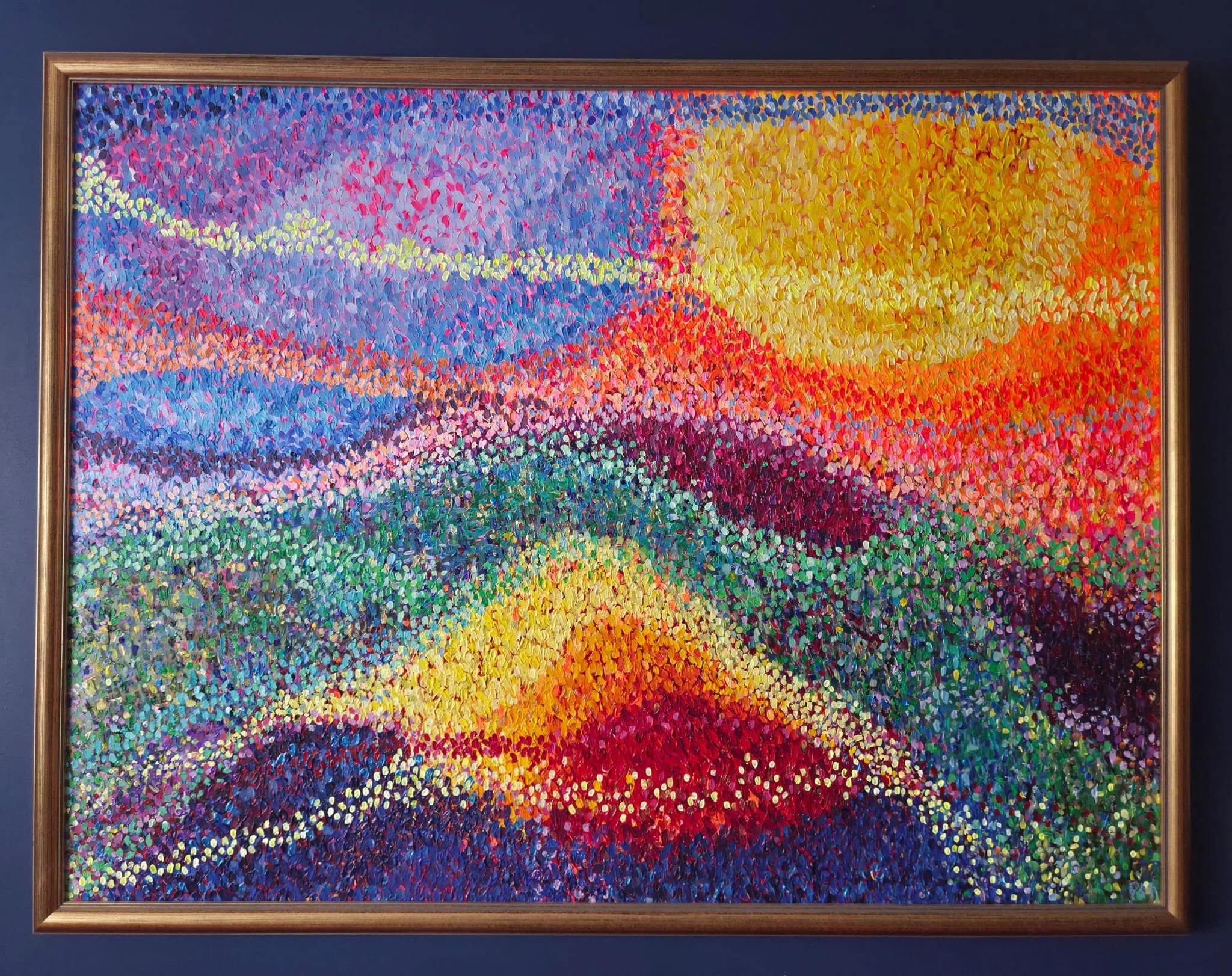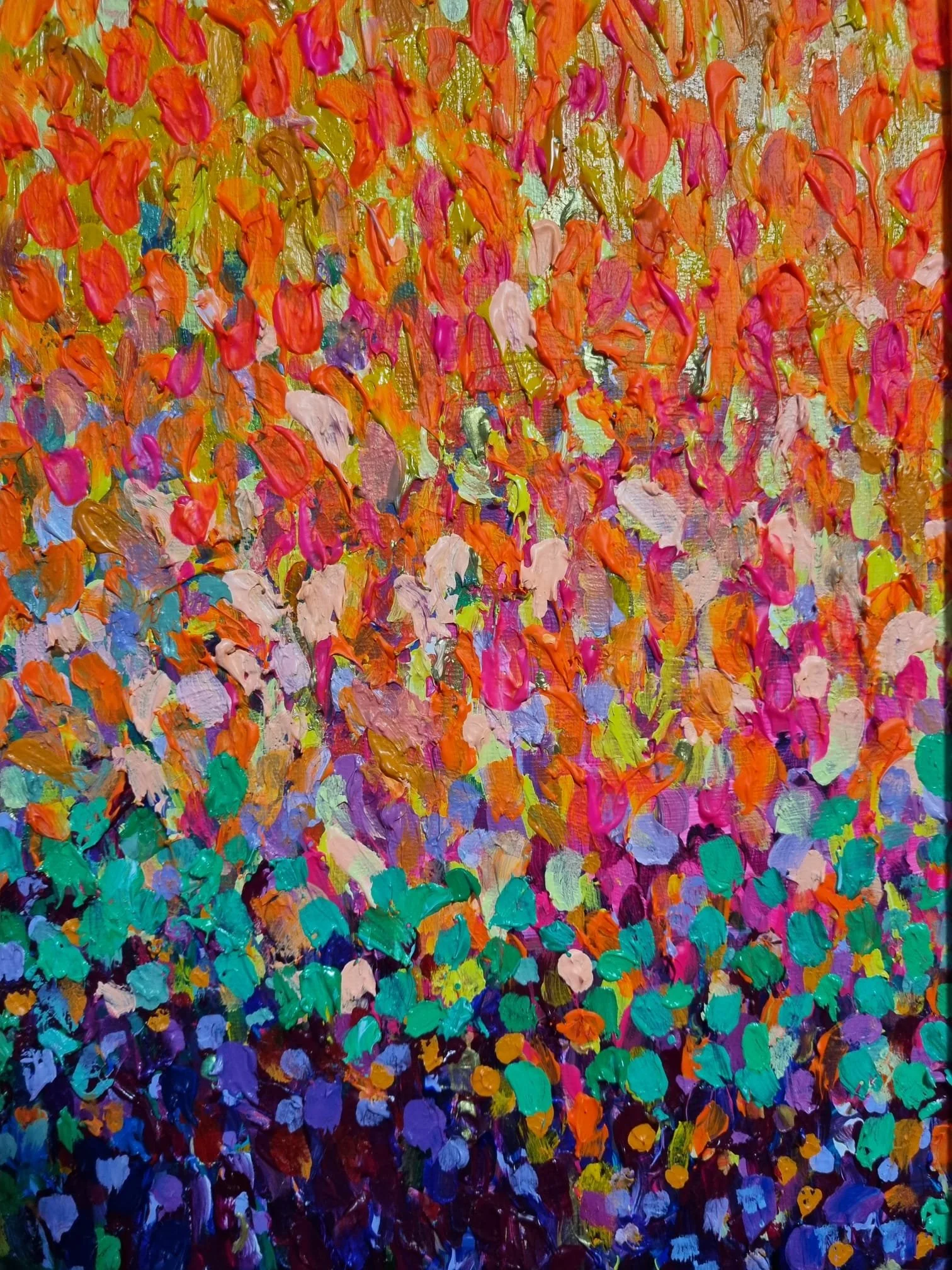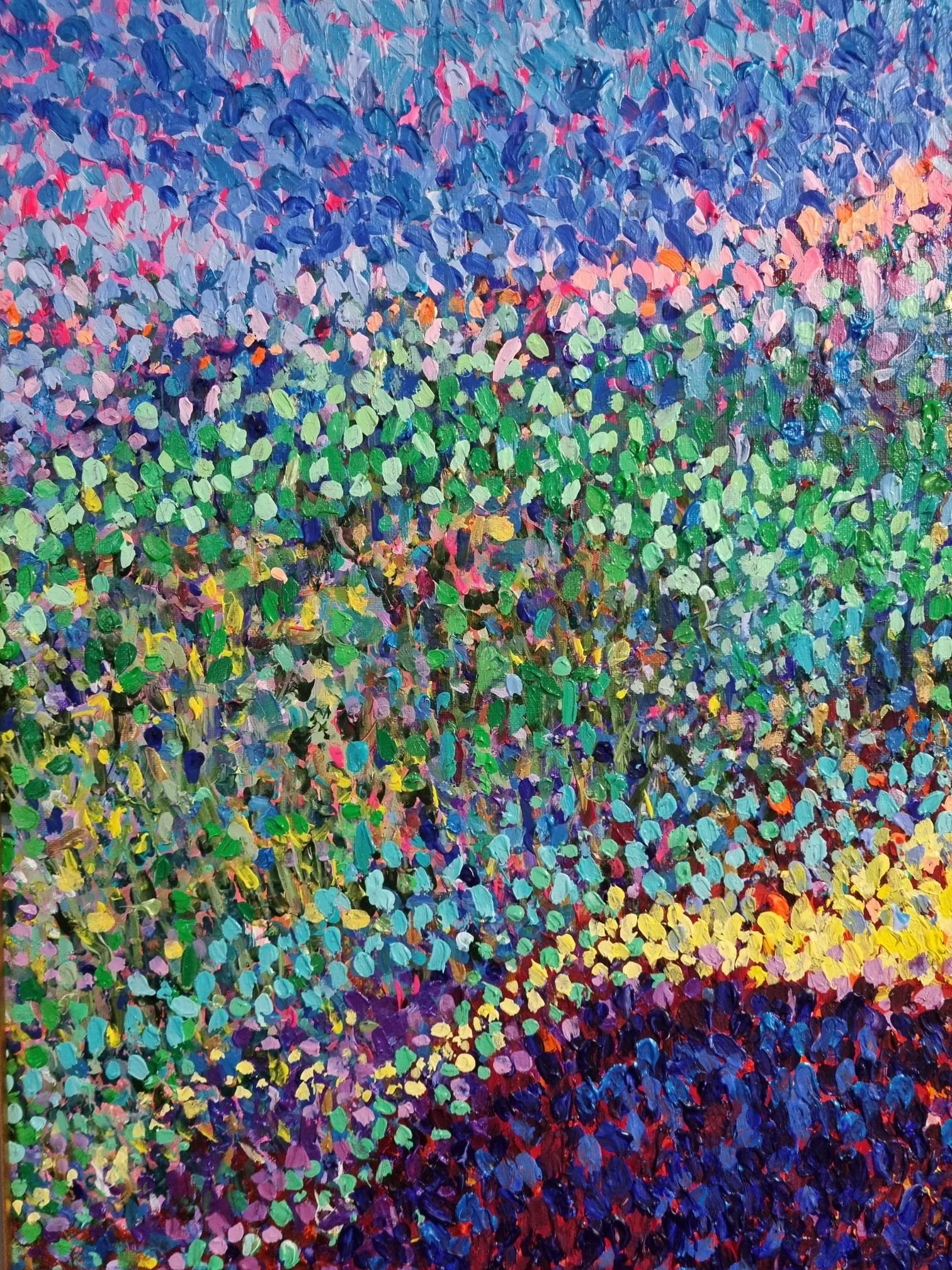 Image 1 of 3
Image 1 of 3

 Image 2 of 3
Image 2 of 3

 Image 3 of 3
Image 3 of 3




Edit Before Send Final FINAL
This second work within the 'Edit Before Send' collection pivots from the pressure of corporate composure to the tension of creative authenticity and performance within the artistic community. It explores the moment an artist chooses internal truth over external expectation, transforming a familiar scene into an energetic visual transcript of feeling.
The Stages of Conception: Rejecting the Mold
The piece began during a seemingly conventional 'Wine & Paint' session with the artist's close friend and fellow artist, Zirena. Ashcroft initially attempted to execute a specific vision: a mystical forest landscape bathed in pink sunset hues. This effort, however, quickly felt disconnected and performative, adhering to a preconceived aesthetic rather than an authentic emotion. This stage represents the pressure to deliver a marketable creative result, even among peers.
The decisive change occurred when Ashcroft rejected the technical constraint, allowing the image to explode into an energetic and emotional final version. The resulting piece is a powerful landscape that conveys the artist's intentions and feelings rather than merely the mundane form of the original scene. It is a testament to the fact that emotional honesty, not technical replication, defines the work's final value.
The Philosophy of the Ongoing Document
Like the inaugural work in the collection, this canvas is intentionally left unvarnished, reflecting a philosophy deeply rooted in the artist's corporate-world insight: "Done is better than perfect."
Ashcroft views the work not as a fixed product, but as a living, iterative document. While hanging on her walls, she continues adding 'final final final' touches whenever spontaneous sparks of creativity arise. This practice of continuous, minor editing - of deliberately refusing final preservation—is the artistic equivalent of pivoting your strategy later. It captures the executive's understanding that true value lies in momentum and adaptability, transforming the artwork into a dynamic conceptual asset that resists the illusion of completion.
This second work within the 'Edit Before Send' collection pivots from the pressure of corporate composure to the tension of creative authenticity and performance within the artistic community. It explores the moment an artist chooses internal truth over external expectation, transforming a familiar scene into an energetic visual transcript of feeling.
The Stages of Conception: Rejecting the Mold
The piece began during a seemingly conventional 'Wine & Paint' session with the artist's close friend and fellow artist, Zirena. Ashcroft initially attempted to execute a specific vision: a mystical forest landscape bathed in pink sunset hues. This effort, however, quickly felt disconnected and performative, adhering to a preconceived aesthetic rather than an authentic emotion. This stage represents the pressure to deliver a marketable creative result, even among peers.
The decisive change occurred when Ashcroft rejected the technical constraint, allowing the image to explode into an energetic and emotional final version. The resulting piece is a powerful landscape that conveys the artist's intentions and feelings rather than merely the mundane form of the original scene. It is a testament to the fact that emotional honesty, not technical replication, defines the work's final value.
The Philosophy of the Ongoing Document
Like the inaugural work in the collection, this canvas is intentionally left unvarnished, reflecting a philosophy deeply rooted in the artist's corporate-world insight: "Done is better than perfect."
Ashcroft views the work not as a fixed product, but as a living, iterative document. While hanging on her walls, she continues adding 'final final final' touches whenever spontaneous sparks of creativity arise. This practice of continuous, minor editing - of deliberately refusing final preservation—is the artistic equivalent of pivoting your strategy later. It captures the executive's understanding that true value lies in momentum and adaptability, transforming the artwork into a dynamic conceptual asset that resists the illusion of completion.